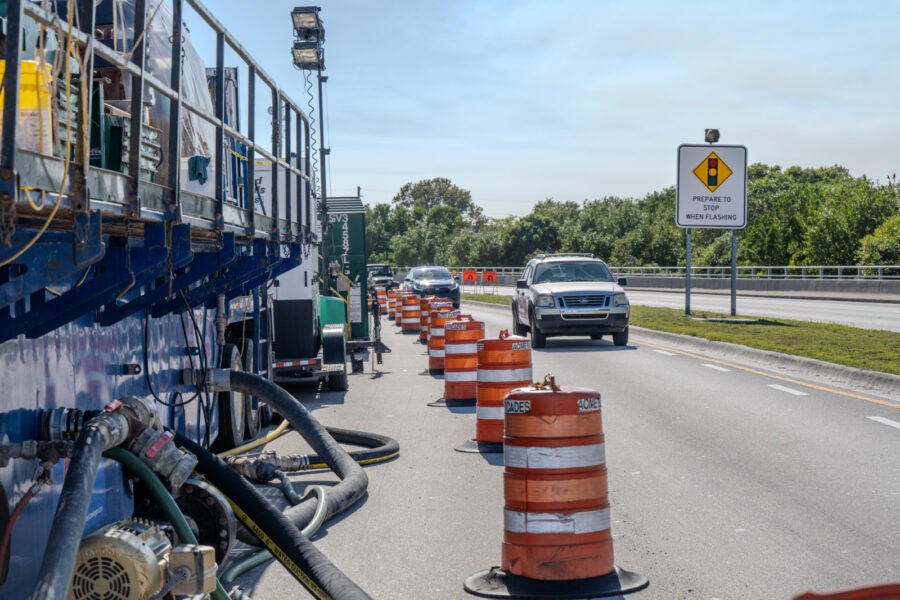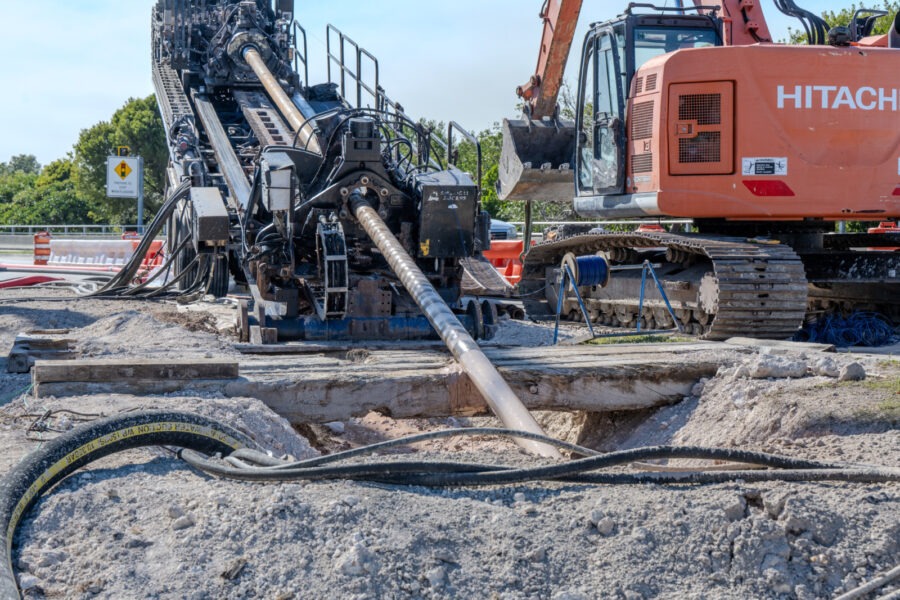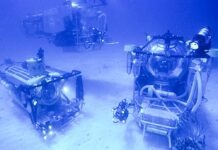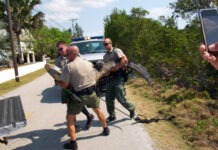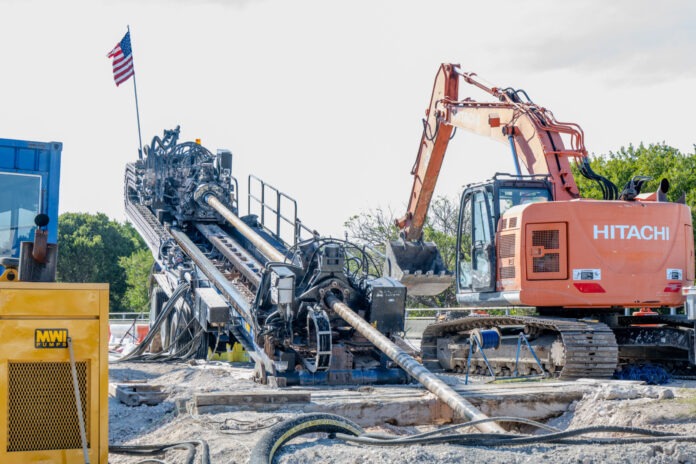
A crew is working at Tavernier Creek Crossing to install new drinking water pipe. The pipe is being installed underwater to protect it from high winds and storm surges.
Florida Keys Aqueduct Authority says directional drill work is complicated and working during the day helps reduce the chances of frac outs – the unintended return of drilling fluids during horizontal directional drilling process, which could cause environmental harm and project delays. If the drill end point is not reached by the end of the workday, the crew must continue drilling into the night until they reach it.
The drill rig must remain in place for six to eight weeks until this work is complete. As a result, the traffic control plan is required to remain in place around the clock.
At Tavernier Creek Crossing, the work area runs from Royal Poinciana Boulevard to just south of Ocean Boulevard. In the work zone, the crew needs room to operate the directional drill rig, bring large segments of pipe in and out, and weld them together.
At Woods Avenue, northbound traffic is already single lane. At Royal Poinciana Boulevard, the traffic normally shifts to two lanes.
If the northbound lane shift were to begin north of Royal Poinciana, then traffic would go from single lane to double lane for a very short stretch and need to be transitioned back to single lane to meet the Florida Department of Transportation’s required buffer zone of about 500 feet as motorists approach the rig. This would cause added congestion and encroach on the Bessie Road intersection. Therefore, the Florida Department of Transportation has approved the single northbound lane to continue from Woods Avenue through the work zone.More information is at fkaa.com (click on “Projects in progress”), or via email to community@fkaa.com. After-hours support is at 305-296-2454.
